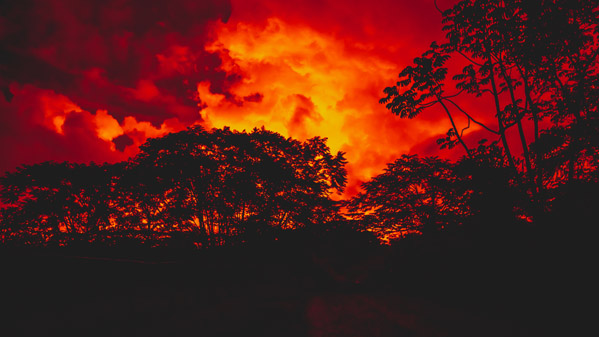By Ambassador Callista L. Gingrich and Speaker Newt Gingrich
We love Hawaii. We honeymooned on the Big Island at Mauna Kea. We stayed on Kauai many times. We visited the U.S. Indo-Pacific Command on Oahu and filmed at the battleships Missouri and the Arizona. We golfed on Lanai. We have been all over our 50th state. Our favorite island, however, and the one we visit frequently, is Maui.
We have often visited the historic port of Lahaina. It was the alternative base for the Pacific Fleet when it moved out of Peal Harbor. Lahaina has traditionally been a wonderful town with historic buildings, terrific restaurants, and a remarkable tourist industry. So, for us, the disastrous fires on Maui have been painful to watch.
Lahaina’s greatest symbol is a huge, 60-foot banyan tree with 16 secondary trunks. Its canopy covers two-thirds of an acre. Just five months ago, the people of Lahaina celebrated the 150th anniversary of the planting of the tree back on April 24, 1873.
We have spent many afternoons around this tree listening to an amazing range of birds and appreciating its shade on a hot Hawaiian day. When combined with an ice cream cone or a cold drink, visiting Lahaina Banyan Court is a wonderful part of any Maui trip.
The banyan tree was badly burned, but there is some hope it will survive. The same cannot be said for the nearly 100 people who have died in this tragedy. The terrible loss of life has made this the worse U.S. wildfire tragedy in over a century.
We have good friends on Maui and fortunately they were on a part of the island where the fires did not occur. However, they wrote us:
“We were the fortunate ones. The fire was moving fast from North Kihei but was stopped in time! This island is a mess! The homeless are everywhere. Lahaina with the beautiful banyan tree is gone. Hawaiian history erased. The whole thing is heartbreaking. We witnessed a nightmare.”
This nightmare was echoed in an astonishing Associated Press story by Claire Galofino, Claire Rush, and Matt Sedensky, which we recommend highly.
What is truly heart breaking is that this disaster was avoidable. As the New York Times reported, the end of the sugar cane economy opened the way for foreign invasive grasses to spread.
The Times asserted “Varieties like guinea grass, molasses grass and buffel grass — which originated in Africa and were introduced to Hawaii as livestock forage — now occupy nearly a quarter of Hawaii’s landmass. Fast growing when it rains and drought resistant when lands are parched, such grasses are fueling wildfires across Hawaii, including the blaze that claimed at least 93 lives in Maui last week.”
And this isn’t a new problem. Nine years ago, in the journal Applied Vegetation Science, four scientists warned that the invasive grasses were an enormous and growing threat in Hawaii. Lisa Ellsworth, Creighton Litton, Alexander Dale, and Tomoaki Miura wrote: “[C]onversion associated with non-native grass invasion and subsequent fire has occurred on landscape scales in Hawaii. Once forests are converted to grassland there is a significant increase in fire intensity, which likely provides the positive feedback to continued grassland dominance in the absence of active fire management.”
Unfortunately, the warnings were not heeded by government – local, state, or federal. A July 2021 Cost of Government Commission for the County of Maui report found that in the Maui County Department of Fire and Safety’s strategic plan through 2025 “prevention is given short shrift. There is no stated goal of fire prevention, or any metric to assess success or improvement in prevention. There is much space devoted to preventing injuries and illness in employees, and to preventing equipment failure, but nothing about what can and should be done to prevent fires.”
This warning about the need for wildfire prevention was followed by a State of Hawaii Emergency Management Agency plan which suggested that the risk of loss of life from wildfires was low. The state has been tragically proven wrong.
This disaster could have been avoided. Sound fire management principles and established forest and grassland science were ignored by people with political agendas.
These are avoidable tragedies. We owe it to those who died in Maui to be better stewards of our forests and grasslands – and insist on a safer future.


